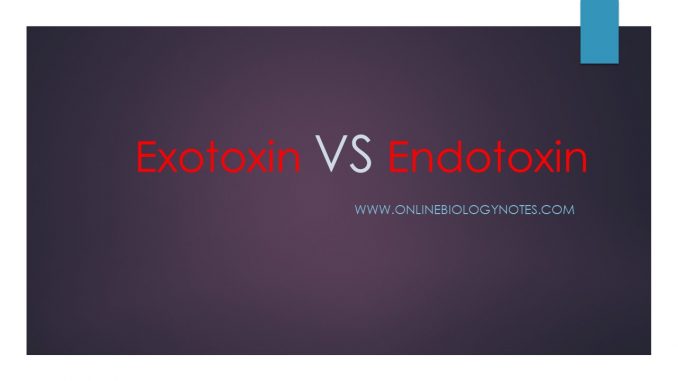| SN. |
Point of distinction
|
Exotoxin
|
Endotoxin
|
| 1. |
Production |
It is released out of living bacterial cell |
It is a component of bacterial cell wall |
| 2. |
Chemical composition |
Protein in nature |
Lipopolysaccharide |
| 3. |
Molecular weight |
10Kda |
50-1000KDa |
| 4. |
Location of toxin producing gene |
Plasmid or phage DNA |
Chromosomal DNA |
| 5. |
On Heat treatment |
Heat labile |
Heat stable. It can withstand temperature of autoclave |
| 6. |
On Formaldehyde treatment |
It form toxoid when treated with formaldehyde, which can be used as vaccine. |
It does not form toxoid. |
| 7. |
Toxicity |
More toxic |
Less toxic |
| 8. |
Lethal dose |
low |
High |
| 9. |
Immunogenicity |
Highly immunogenic, induce production of neutralizing antibodies |
Poorly immunogenic |
| 10. |
Mechanism of action |
Different exotoxin have different mechanism of action. Eg. Some are neurotoxic, some are cytotoxic, some are enterotoxic etc |
All endotoxin have similar mechanism of action. It includes pyrogenicity, blood change and shock |
| 11. |
Pyrogenicity (induce fever) |
Not pyrogenic |
Pyrogenic |
| 12. |
Produced by |
Gram positive bacteria ( streptococcus pyogens, Staphylococcus aureus, Bacillus, Costridium tetani) and certain Gram negative bacteria |
Gram negative cell wall composition ( E. coli, Salmonella, Shigella) |
| 13. |
Diseases caused |
Tetanus, Diphtheria, Botulism |
Sepsis, bacteremia, |

